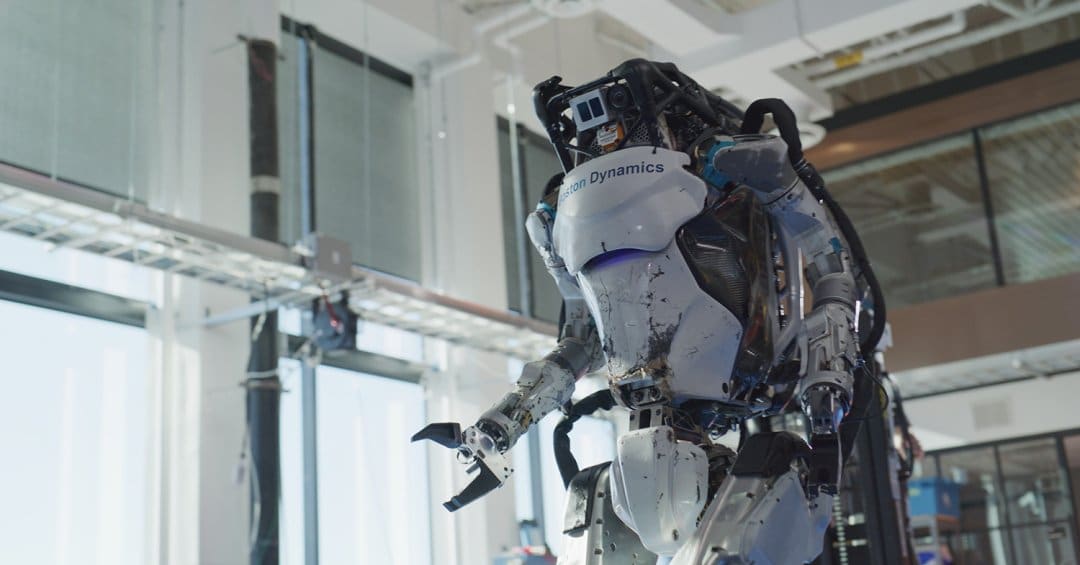
**Humans and Robots: Fostering Trust Through Movement in Collaborative Environments**
As collaboration between humans and robots becomes more common across various sectors such as industrial manufacturing, healthcare, and disaster management, researchers are investigating how to enhance teamwork between humans and their robotic associates. A new study from the University of Bristol provides compelling insights into how synchronized movement—or “co-movement”—can cultivate trust and enhance human-robot cooperation. The conclusions, released in *arXiv*, may have significant ramifications for emergency response operations and other areas.
### The Experiment: Advancing Human-Robot Cooperation
Conducted in a controlled search-and-rescue environment, the experiment aimed to replicate scenarios where humans and robots need to collaborate, such as assessing perilous settings after a natural disaster or fire. Participants worked alongside two mobile rover robots fitted with cameras. Each group was assigned to examine a building designed to reflect a post-fire context. Ultrasound tracking technology was used to observe how both participants and robots navigated and interacted spatially within the structure.
A pivotal aspect of the study involved orchestrating a disruption: participants were split into two groups, with one group experiencing a three-minute communication breakdown during which the robots ceased to respond. This condition allowed researchers to explore how lapses in communication impact trust and movement dynamics.
### The Influence of Movement on Trust-Building
One of the main insights from the research is the significance of synchronized movement—within a two-meter range of the robots—in enhancing trust. Dr. Edmund Hunt, the study’s principal author, noted, “Humans have preferred social distances during interactions, and their closeness influences engagement. The manner in which a robot moves can also communicate critical information to a user—humans readily interpret goal-oriented behaviors from robot motion.”
When human participants and robots moved fluidly and cohesively within the same physical area, the level of trust within the group grew. Participants came to see the robots as dependable partners and integrated them into their workflows seamlessly. In contrast, when trust was compromised—such as during the communication lapse—this pattern of co-movement faltered. Trust disruptions led to participant frustration with unresponsive robots, diminishing the sense of teamwork.
### Proximity and Engagement: Factors Influencing Participant Preferences
Notably, interviews conducted after the experiment indicated that participants typically favored collaboration with the robot that maintained a closer physical presence. This inclination for proximity resonates with concepts in proxemics—the analysis of how people utilize and perceive physical space. The robot’s closeness seemed to bolster its perceived contribution to the task, reinforcing its status as a valuable member of the “team.”
The results also illustrate how humans instinctively interpret robotic actions through social cues. A robot that appears to move intentionally—by adjusting to maintain closeness or matching the human participant’s speed—evokes greater trust and involvement compared to one that appears passive or motionless.
### Restoring Trust: Insights from Dynamic Relationships
The experiment provided significant insights into the dynamics of trust in human-robot interactions. Researchers highlighted that trust is not a fixed entity. Temporary disruptions—like the communication issues encountered in the study—can disrupt the synchronized movement patterns that build trust. However, this also presents opportunities for remedial actions. If robots can be programmed to monitor and identify shifts in movement synchronization, they may recognize early signs of declining trust and undertake actions to mend the relationship. This could involve re-establishing closer proximity, signaling readiness to re-engage, or even using visual or auditory cues to acknowledge and address lapses in performance.
Dr. Hunt emphasized the importance of these findings: “Looking ahead, humans and robots will increasingly work together in teams—teammates will need to trust one another. Our findings indicate that synchronized movement enhances trust between humans and robots. Conversely, when trust is compromised, the synchronization falters, which could hinder team effectiveness.”
### Real-World Applications
The outcomes of this study have important implications for industries and situations where human-robot collaboration is essential:
1. **Emergency Services:**
Search-and-rescue operations could greatly benefit from robots designed to establish trust with human rescuers. By refining movement behaviors and proactively addressing trust-related disruptions, robots could emerge as more trustworthy allies in high-pressure situations.
2. **Healthcare:**
Robotic assistants in hospitals could monitor movements and proximity to provide reassurance to patients or help healthcare workers coordinate tasks with greater ease.
3. **Manufacturing and Warehousing:**
In settings that require cooperative efforts, synchronizing movements with human coworkers could enable robots to be more instinctive partners, boosting overall efficiency and safety.
4. **Education and Training:**
Incorporating robots into educational environments for training purposes could involve programming them to establish and maintain trust with human trainees by tracking engagement through movement patterns.
### Creating Trustworthy Robots: Future Directions
This study paves the way for exciting possibilities in designing robots that comprehend, foresee, and adapt to human expectations.